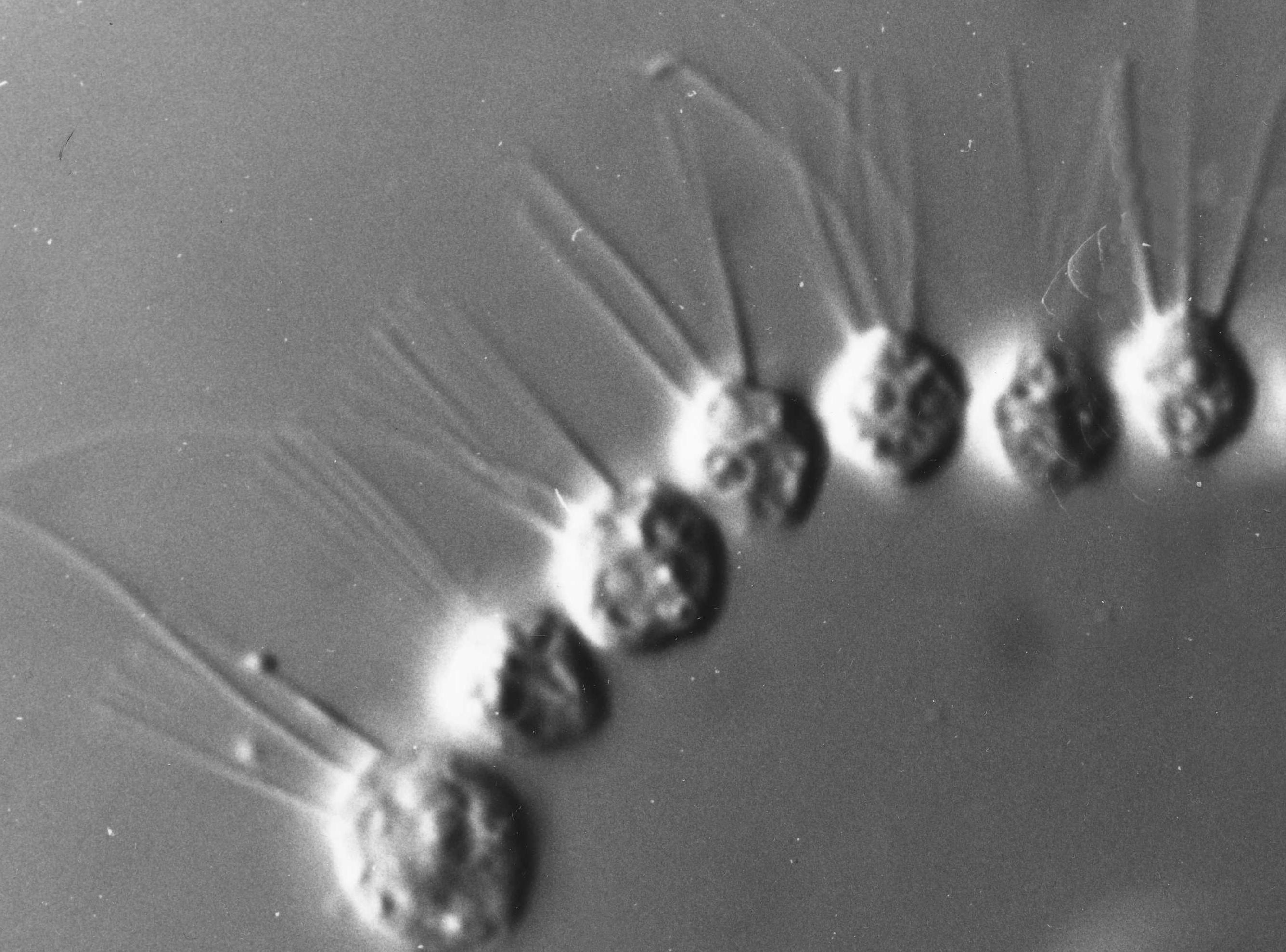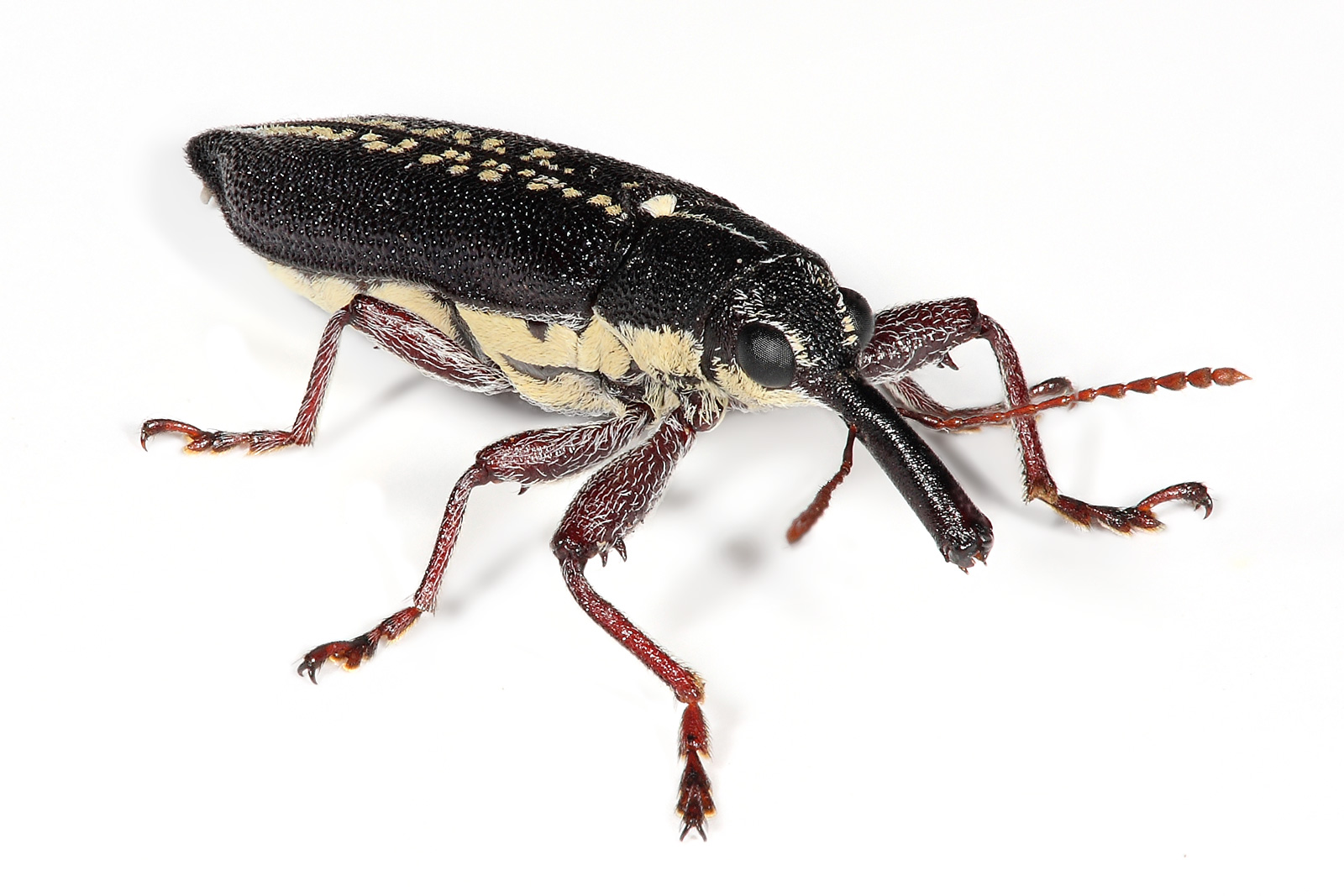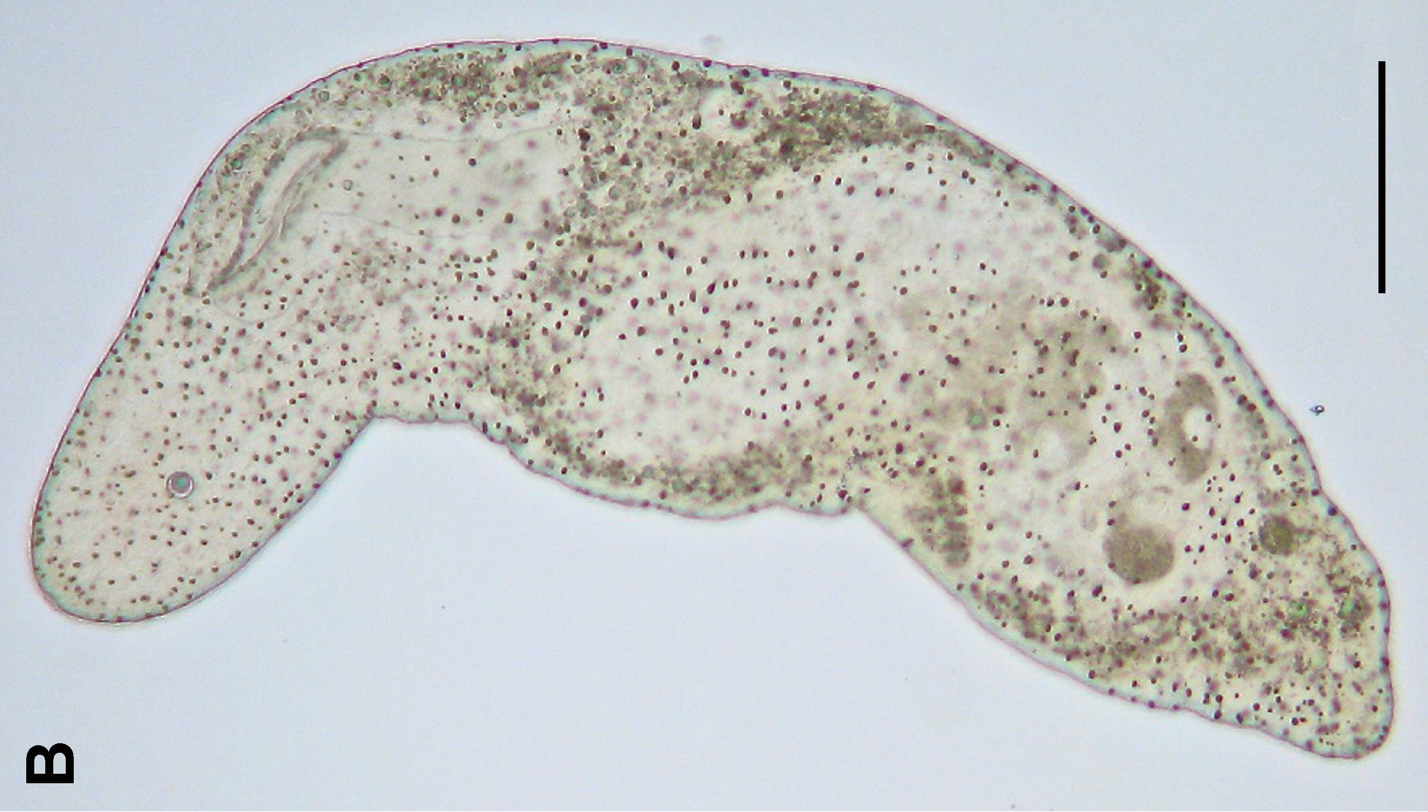|
Planulozoa
Planulozoa is a clade which includes the Placozoa, Cnidaria (corals and jellyfish) and the Bilateria (all the more complex animals including worms, insects and vertebrates). The designation Planulozoa may be considered a synonym to ParaHoxozoa. Within Planulozoa, the Placozoa may be a sister of Cnidaria to the exclusion of Bilateria. The clade excludes basal animals such as the Ctenophora (comb jellies), and Porifera (sponges). Although this clade was sometimes used to specify a clade of Cnidaria and Bilateria to the exclusion of Placozoa (against the original intention of its proposal), this is no longer favoured due to recent data (several 2018 studies) indicating a sister group relationship between Cnidaria and Placozoa. However, a 2023 study supports Placozoa as sister to Cnidaria+Bilateria in several analyses. The phylogenetic tree A phylogenetic tree or phylogeny is a graphical representation which shows the evolutionary history between a set of species or taxa duri ... [...More Info...] [...Related Items...] OR: [Wikipedia] [Google] [Baidu] |
Placozoa
Placozoa ( ; ) is a phylum of free-living (non-parasitic) marine invertebrates. They are blob-like animals composed of aggregations of cells. Moving in water by ciliary motion, eating food by Phagocytosis, engulfment, reproducing by Fission (biology), fission or budding, placozoans are described as "the simplest animals on Earth." Structural and molecular analyses have supported them as among the most basal animals, thus, constituting a primitive metazoan phylum. The first known placozoan, ''Trichoplax adhaerens'', was discovered in 1883 by the German zoologist Franz Eilhard Schulze (1840–1921).F. E. Schulze "''Trichoplax adhaerens'' n. g., n. s.", ''Zoologischer Anzeiger'' (Elsevier, Amsterdam and Jena) 6 (1883), p. 92. Describing the uniqueness, another German, Karl Gottlieb Grell (1912–1994), erected a new phylum, Placozoa, for it in 1971. Remaining a monotypic phylum for over a century, new species began to be added since 2018. So far, three other extant species have been ... [...More Info...] [...Related Items...] OR: [Wikipedia] [Google] [Baidu] |
ParaHoxozoa
ParaHoxozoa (or Parahoxozoa) is a clade of animals that consists of Bilateria, Placozoa, and Cnidaria. Phylogeny The relationship of Parahoxozoa relative to the two other animal lineages Ctenophora and Porifera is debated. Some phylogenomic studies have presented evidence supporting Ctenophora as the sister to Parahoxozoa and Porifera as the sister group to the rest of animals (e.g. ). Other studies have presented evidence supporting Porifera as the sister to Parahoxozoa and Ctenophora as the sister group to the rest of animals (e.g. ), finding that nervous systems either evolved independently in ctenophores and parahoxozoans, or were secondarily lost in poriferans. If ctenophores are taken to have diverged first, Eumetazoa is sometimes used as a synonym for ParaHoxozoa. The cladogram, which is congruent with the vast majority of these phylogenomic studies, conveys this uncertainty with a polytomy. ParaHoxozoa or Parahoxozoa "ParaHox" genes are usually referred to in ... [...More Info...] [...Related Items...] OR: [Wikipedia] [Google] [Baidu] |
Porifera
Sponges or sea sponges are primarily marine invertebrates of the animal phylum Porifera (; meaning 'pore bearer'), a Basal (phylogenetics) , basal clade and a sister taxon of the Eumetazoa , diploblasts. They are sessility (motility) , sessile filter feeders that are bound to the seabed, and are one of the most ancient members of macrobenthos, with many historical species being important sponge reef , reef-building organisms. Sponges are multicellular organisms consisting of jelly-like mesohyl sandwiched between two thin layers of cell (biology) , cells, and usually have tube-like bodies full of pores and channels that allow water to circulate through them. They have unspecialized cells that can cellular differentiation , transform into other types and that often migrate between the main cell layers and the mesohyl in the process. They do not have complex nervous system , nervous, digestive system , digestive or circulatory systems. Instead, most rely on maintaining a constant ... [...More Info...] [...Related Items...] OR: [Wikipedia] [Google] [Baidu] |
Eumetazoa
Eumetazoa (), also known as Epitheliozoa or Histozoa, is a proposed basal animal subkingdom as a sister group of Porifera (sponges). The basal eumetazoan clades are the Ctenophora and the ParaHoxozoa. Placozoa is now also seen as a eumetazoan in the ParaHoxozoa. The competing hypothesis is the Myriazoa clade. The subkingdom Parazoa and Agnotozoa are the other taxa, and agnotozoa may be fake or even nonexistent at studies. Parazoa or Agnotozoa are a main sister group to eumetazoans, forming clade Blastozoa/Diploblastozoa. Alternatively, Parazoa was considered as a sister group to Agnotozoa(now considered polyphyletic). Several other extinct or obscure life forms, such as '' Iotuba'' and '' Thectardis'', appear to have emerged in the group. Characteristics of eumetazoans include true tissues organized into germ layers, the presence of neurons and muscles, and an embryo that goes through a gastrula stage. Some phylogenists once speculated the sponges and eumetazoans evolv ... [...More Info...] [...Related Items...] OR: [Wikipedia] [Google] [Baidu] |
Cnidaria
Cnidaria ( ) is a phylum under kingdom Animalia containing over 11,000 species of aquatic invertebrates found both in fresh water, freshwater and marine environments (predominantly the latter), including jellyfish, hydroid (zoology), hydroids, sea anemones, corals and some of the smallest marine parasites. Their distinguishing features are an uncentralized nervous system distributed throughout a gelatinous body and the presence of cnidocytes or cnidoblasts, specialized cells with ejectable flagella used mainly for envenomation and capturing prey. Their bodies consist of mesoglea, a non-living, jelly-like substance, sandwiched between two layers of epithelium that are mostly one cell (biology), cell thick. Cnidarians are also some of the few animals that can reproduce both sexually and asexually. Cnidarians mostly have two basic body forms: swimming medusa (biology), medusae and sessility (motility), sessile polyp (zoology), polyps, both of which are radially symmetrical with mou ... [...More Info...] [...Related Items...] OR: [Wikipedia] [Google] [Baidu] |
Cladistics (journal)
''Cladistics'' is a bimonthly peer-reviewed scientific journal which has published research in cladistics since 1985. It is published by Wiley-Blackwell on behalf of the Willi Hennig Society. ''Cladistics'' publishes papers relevant to evolution, systematics, and integrative biology. Papers of both a conceptual or philosophical nature, discussions of methodology, empirical studies on taxonomic groups from animals to bacteria, and applications of systematics in disciplines such as genomics, paleontology and biomedical epidemiology are accepted. Five types of paper appear in the journal: reviews, regular papers, forum papers, letters to the editor, and book reviews. Its editor-in-chief is Rudolf Meier, who replaced Dennis Stevenson in 2019. According to the ''Journal Citation Reports'', the journal has a 2023 impact factor The impact factor (IF) or journal impact factor (JIF) of an academic journal is a type of journal ranking. Journals with higher impact factor values are con ... [...More Info...] [...Related Items...] OR: [Wikipedia] [Google] [Baidu] |
Philosophical Transactions Of The Royal Society B
''Philosophical Transactions of the Royal Society B: Biological Sciences'' is a biweekly peer-reviewed scientific journal published by the Royal Society. The editor-in-chief is Richard Dixon (UNT). Overview Each issue covers a specific area of the biological sciences. Each issue aims to create an original and authoritative synthesis, often bridging traditional disciplines, which showcases current developments and provides a foundation for future research, applications and policy decisions. Each issue is edited by one or more expert guest editors. The themes fall into one of four general categories: * Cell and Development * Health and Disease * Environment and Evolution * Neuroscience and Cognition All articles become freely accessible one year after their publication date. History ''Philosophical Transactions of the Royal Society'' was established in 1665 by the Royal Society and is the oldest scientific journal in the English-speaking world. Henry Oldenburg was appoint ... [...More Info...] [...Related Items...] OR: [Wikipedia] [Google] [Baidu] |
Ctenophora
Ctenophora (; : ctenophore ) is a phylum of marine invertebrates, commonly known as comb jellies, that inhabit sea waters worldwide. They are notable for the groups of cilia they use for swimming (commonly referred to as "combs"), and they are the largest animals to swim with the help of cilia. Depending on the species, adult ctenophores range from a few millimeters to in size. 186 living species are recognised. Their bodies consist of a mass of jelly, with a layer two cells thick on the outside, and another lining the internal cavity. The phylum has a wide range of body forms, including the egg-shaped cydippids with a pair of retractable tentacles that capture prey, the flat, generally combless platyctenids, and the large-mouthed beroids, which prey on other ctenophores. Almost all ctenophores function as predators, taking prey ranging from microscopic larvae and rotifers to the adults of small crustaceans; the exceptions are juveniles of two species, which live a ... [...More Info...] [...Related Items...] OR: [Wikipedia] [Google] [Baidu] |
Basal Animals
Marine life, sea life or ocean life is the collective ecological communities that encompass all aquatic animals, aquatic plant, plants, algae, marine fungi, fungi, marine protists, protists, single-celled marine microorganisms, microorganisms and associated marine virus, viruses living in the saline water of marine habitats, either the sea water of marginal seas and oceans, or the brackish water of coastal wetlands, lagoons, estuary, estuaries and inland seas. , more than 242,000 marine species have been documented, and perhaps two million marine species are yet to be documented. An average of 2,332 new species per year are being described. Marine life is studied scientifically in both marine biology and in biological oceanography. By volume, oceans provide about 90% of the living space on Earth, and served as the cradle of life and vital biotic sanctuaries throughout Earth's geological history. The earliest known life forms evolved as anaerobe, anaerobic prokaryotes (archaea ... [...More Info...] [...Related Items...] OR: [Wikipedia] [Google] [Baidu] |
Clade
In biology, a clade (), also known as a Monophyly, monophyletic group or natural group, is a group of organisms that is composed of a common ancestor and all of its descendants. Clades are the fundamental unit of cladistics, a modern approach to taxonomy adopted by most biological fields. The common ancestor may be an individual, a population, or a species (extinct or Extant taxon, extant). Clades are nested, one in another, as each branch in turn splits into smaller branches. These splits reflect evolutionary history as populations diverged and evolved independently. Clades are termed ''monophyletic'' (Greek: "one clan") groups. Over the last few decades, the cladistic approach has revolutionized biological classification and revealed surprising evolutionary relationships among organisms. Increasingly, taxonomists try to avoid naming Taxon, taxa that are not clades; that is, taxa that are not Monophyly, monophyletic. Some of the relationships between organisms that the molecul ... [...More Info...] [...Related Items...] OR: [Wikipedia] [Google] [Baidu] |
Spiralia
The Spiralia are a morphologically diverse clade of protostome animals, including within their number the molluscs, annelids, platyhelminths and other Taxon, taxa. The term ''Spiralia'' is applied to those phyla that exhibit canonical spiral cleavage, a pattern of early development found in most members of the Lophotrochozoa. Distribution of spiralian development across phylogeny Members of the molluscs, annelids, platyhelminths and nemerteans have all been shown to exhibit spiral cleavage in its classical form. Other spiralian phyla (rotifers, brachiopods, phoronids, gastrotrichs, and bryozoans) are also said to display a derived form of spiral cleavage in at least a portion of their constituent species, although evidence for this is sparse. Lophotrochozoa within Spiralia Previously, spiral cleavage was thought to be unique to the Spiralia in the strictest sense—animals such as molluscs and annelids which exhibit classical spiral cleavage. The presence of spiral cleavage in ... [...More Info...] [...Related Items...] OR: [Wikipedia] [Google] [Baidu] |
Ecdysozoa
Ecdysozoa () is a group of protostome animals, including Arthropoda (insects, chelicerates (including arachnids), crustaceans, and myriapods), Nematoda, and several smaller phylum (biology), phyla. The grouping of these animal phyla into a single clade was first proposed by Eernisse ''et al.'' (1992) based on a phylogenetic analysis of 141 morphological characters of ultrastructural and embryological phenotypes. This clade, that is, a group consisting of a common ancestor and all its descendants, was formally named by Aguinaldo ''et al.'' in 1997, based mainly on phylogenetic trees constructed using 18S ribosomal RNA genes. A large study in 2008 by Dunn ''et al.'' strongly supported the monophyly of Ecdysozoa. The group Ecdysozoa is supported by many Morphology (biology), morphological characters, including growth by ecdysis, with moulting of the cuticle – without mitosis in the epidermis – under control of the prohormone ecdysone, and internal fertilization. The group was i ... [...More Info...] [...Related Items...] OR: [Wikipedia] [Google] [Baidu] |







